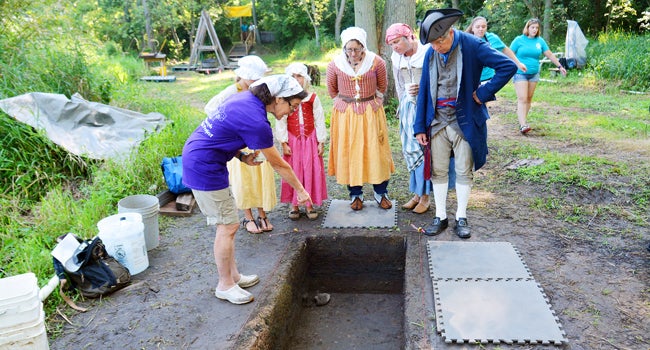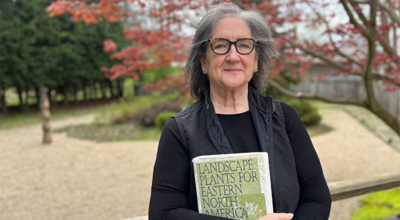Witness history at Fort St. Joseph open house
Published 8:43 am Friday, August 5, 2016

- Leader photos/CRAIG HAUPERT A group of living history actors learn about one of the dig sites at the Fort St. Joseph archaeological site Thursday morning. The site is open to the public Saturday and Sunday.
A rare Jesuit medallion is one of hundreds of items dug up during this year’s excavation at the Fort St. Joseph archaeological site in Niles.
Western Michigan Student Tommy Nagel said the medallion, which has a picture of Jesus on one side and the Virgin Mary on the other, would have been a significant piece of jewelry for its owner in the 17th Century.
“Someone probably looked really hard for this before we dug it out of the ground,” he said during a walkthrough of the site for media and other guests Thursday morning.
Those wanting get a first-hand look at the medallion and the rest of the treasures unearthed at the site can do so during a two-day open house from 10 a.m. to 4 p.m. Saturday, Aug. 6, and Sunday, Aug. 7 at the Fort St. Joseph archaeology site, which is located off Bond Street north of Fort Street in the city limits.
Visitors will have an opportunity to see archaeologists in the field while learning about the history of the fort, which was founded in 1686 on land granted to the Jesuits. It was used as a trading post and was under the control of four different countries — France, Britain, Spain and United States — from 1691 to the late 1700s when it was abandoned.
Dr. Michael Nassaney, of WMU, has been leading a group of student archaeologists on a dig of the site since 2002.
In 2008, WMU and the City of Niles entered into a 10-year cooperative agreement to investigate and interpret Fort St. Joseph for the benefit of the public. Thousands of people have witnessed the progress ever since.
“It is a tremendous addition to our community and one that we cherish and prize,” Niles Mayor Mike McCauslin said.
Visitors will also have a chance to see live wet screening demonstrations, take a canoe ride on the river and watch historical actors live out what life was like in the 17th Century.
Boy Scout Troop 579 of Niles will sell food and drink.
The theme of this year’s open house is the St. Joseph River and its significance to the area in the past and today.






